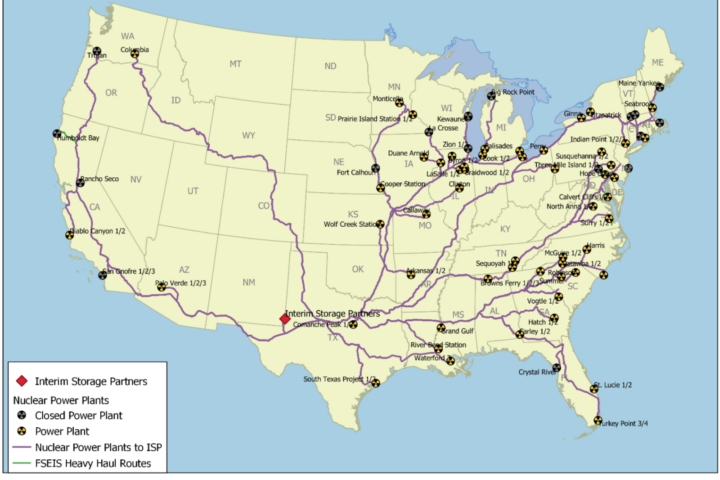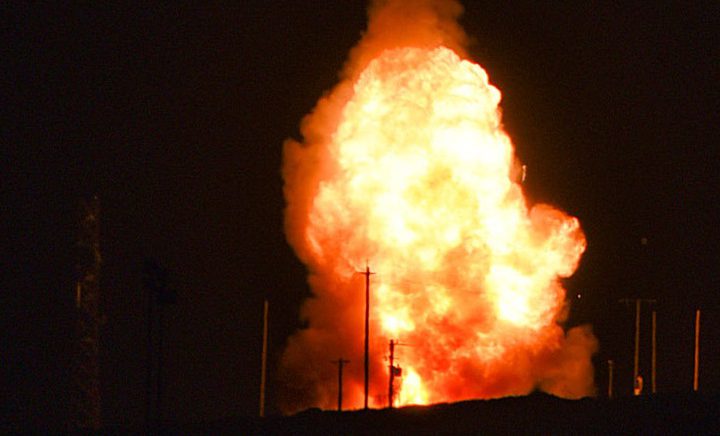Testimony Calls Out Continued DOE Cost Estimating Mismanagement
Given that DOE has challenges estimating almost all large projects, taxpayers must push to spend on cleanup first. Both nuclear weapons and environmental management estimates keep increasing. We can keep spending on dangerous nuclear weapons that we don’t need, or we can finally focus on cleaning up the Cold War mess.
Government Accountability Office (GAO) officials presented some of their recent work to Congress concerning management problems facing the Department of Energy’s (DOE) National Nuclear Security Administration (NNSA) and Office of Environmental Management (EM). NNSA is responsible for managing the nation’s nuclear weapons and supporting the nation’s nuclear nonproliferation efforts. In support of these missions, NNSA’s February 2016 budget justification for the Weapons Activities appropriations account included about $49.4 billion for fiscal years 2017 through 2021 to implement its nuclear weapons complex modernization plans. More recently, in November 2017, NNSA issued its Stockpile Stewardship and Management Plan, which included about $10.2 billion for nuclear weapons activities for fiscal year 2018.
Since the end of the Cold War, it is claimed that much of the nuclear weapons production infrastructure has become outdated, prompting congressional and executive branch decision makers to call on DOE to develop plans to modernize. The Department of Defense’s (DOD) 2010 Nuclear Posture Review identified long-term modernization wishes and alleged requirements. In January 2017, the President directed the Secretary of Defense to initiate a new Nuclear Posture Review to meet the Administration’s vision. This review was released in February 2018.
GAO has found that NNSA’s estimates of funding needed for its modernization plans exceeded the budgetary projections included in the President’s own modernization budgets. And the costs of some major modernization programs—such as for nuclear weapon Life Extension Programs (LEPs) — may also increase and further bust future modernization budgets.
The LEPs facing potential cost increases include:
B61-12 LEP. An independent cost estimate for the program completed in October 2016 exceeded the program’s self-conducted cost estimate from June 2016 by $2.6 billion.
W80-4 LEP. Officials from NNSA’s Office of Cost Policy and Analysis told us that this program may be underfunded by at least $1 billion to meet the program’s existing schedule
W88 Alteration 370. According to officials from NNSA’s Office of Cost Policy and Analysis, this program’s expanded scope of work may result in about $1 billion in additional costs.
EM is responsible for decontaminating and decommissioning nuclear facilities and sites that are contaminated from decades of nuclear weapons production and nuclear energy research. In February 2017, GAO reported that, since its inception in 1989, EM has spent over $164 billion on cleanup efforts, which include retrieving, treating, and disposing of nuclear waste.
GAO found that the federal government’s environmental liability has been growing for the past 20 years—and is likely to continue to increase—and that DOE is responsible for over 80 percent ($372 billion) of the nearly $450 billion reported environmental liability. Notably, this estimate does not reflect all of the future cleanup responsibilities that DOE may face.
Department of Energy’s Office of Environmental Management’s Annual Spending and Growing Environmental Liability
As NNSA works to modernize the nuclear weapons complex, EM is addressing the legacy of 70 years of nuclear weapons production. These activities generated large amounts of radioactive waste, spent nuclear fuel, excess plutonium and uranium, and contaminated soil and groundwater. They also contaminated thousands of sites and facilities, including land, buildings, and other structures and their systems and equipment. Various federal laws, agreements with states (including New Mexico), and court decisions require the federal government to clean up environmental hazards at federal sites and facilities, such as nuclear weapons production facilities. For years, GAO and others have reported on shortcomings in DOE’s approach to addressing its environmental liabilities, including incomplete data on the extent of cleanup needed.
EM has some budget issues, too.
Examples of costs that DOE cannot yet estimate include the following:
DOE has not yet developed a cleanup plan or cost estimate for the Nevada National Security Site and, as a result, the cost of future cleanup of this site was not included in DOE’s fiscal year 2015 reported environmental liability. The nearly 1,400-square-mile site has been used for hundreds of nuclear weapons tests since 1951. These activities have resulted in more than 45 million cubic feet of radioactive waste at the site. According to DOE’s financial statement, since DOE is not yet required to establish a plan to clean up the site, the costs for this work are excluded from DOE’s annually reported environmental liability.
DOE’s reported environmental liability includes an estimate for the cost of a permanent nuclear waste repository, but these estimates are highly uncertain and likely to increase. In March 2015, in response to the termination of the Yucca Mountain repository program, DOE proposed separate repositories for defense high-level and commercial waste. In January 2017, we reported that the cost estimate for DOE’s new approach excluded the costs and time frames for site selection and site characterization.


